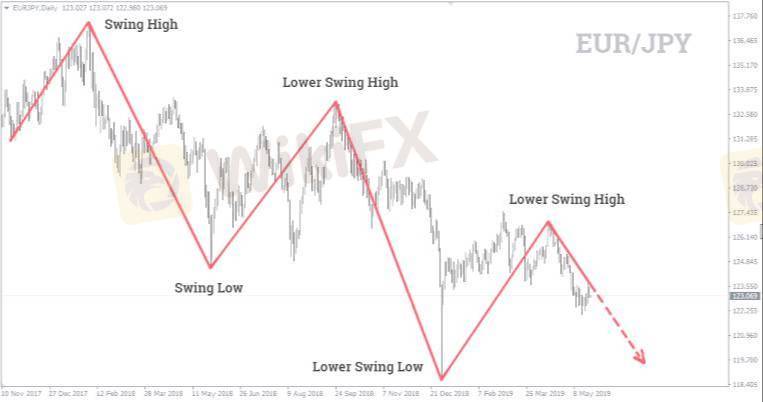
2025-04-28 11:20
IndustryForecasting currency moves fromyield curve shifts
#CurrencyPairPrediction
Forecasting currency moves based on yield curve shifts involves analyzing changes in the shape and level of a country's yield curve to infer potential future movements in its currency value. The yield curve is a graphical representation of the yields of bonds with equal credit quality but different maturity dates. Its shape reflects market expectations about future interest rates and economic activity, which can significantly influence currency valuations.
A steepening yield curve, where the gap between long-term and short-term interest rates widens, can signal expectations of stronger economic growth and potentially higher inflation in the future. This anticipation of higher interest rates can make the country's assets more attractive to foreign investors, increasing demand for its currency and potentially leading to appreciation. Conversely, a flattening yield curve, where the difference between long-term and short-term rates narrows, or an inverted yield curve, where short-term rates are higher than long-term rates, can signal concerns about future economic slowdown or recession. In such scenarios, investors may become less inclined to hold the country's currency, potentially leading to depreciation.
Changes in the overall level of the yield curve also matter. An upward shift across all maturities suggests a general expectation of higher interest rates, which can support the currency. A downward shift indicates expectations of lower interest rates, which may weaken the currency.
Furthermore, the relative changes in yield curves between two countries within a currency pair are crucial. If one country's yield curve steepens relative to another, or if its interest rates are expected to rise more significantly, its currency may strengthen against the other. This is closely linked to the concept of interest rate differentials, where higher relative interest rates tend to attract capital flows and support currency appreciation.
Currency traders analyze yield curve shifts in conjunction with other economic indicators and central bank communications to form expectations about future monetary policy and economic conditions. By understanding these dynamics, they aim to predict potential shifts in currency demand and supply, thereby forecasting future exchange rate movements. However, the relationship is not always straightforward and can be influenced by various global and market-specific factors.
Like 0
nabe3329
Trader
Hot content
Industry
Event-A comment a day,Keep rewards worthy up to$27
Industry
Nigeria Event Giveaway-Win₦5000 Mobilephone Credit
Industry
Nigeria Event Giveaway-Win ₦2500 MobilePhoneCredit
Industry
South Africa Event-Come&Win 240ZAR Phone Credit
Industry
Nigeria Event-Discuss Forex&Win2500NGN PhoneCredit
Industry
[Nigeria Event]Discuss&win 2500 Naira Phone Credit
Forum category

Platform

Exhibition

Agent

Recruitment

EA

Industry

Market

Index
Forecasting currency moves fromyield curve shifts
 Malaysia | 2025-04-28 11:20
Malaysia | 2025-04-28 11:20#CurrencyPairPrediction
Forecasting currency moves based on yield curve shifts involves analyzing changes in the shape and level of a country's yield curve to infer potential future movements in its currency value. The yield curve is a graphical representation of the yields of bonds with equal credit quality but different maturity dates. Its shape reflects market expectations about future interest rates and economic activity, which can significantly influence currency valuations.
A steepening yield curve, where the gap between long-term and short-term interest rates widens, can signal expectations of stronger economic growth and potentially higher inflation in the future. This anticipation of higher interest rates can make the country's assets more attractive to foreign investors, increasing demand for its currency and potentially leading to appreciation. Conversely, a flattening yield curve, where the difference between long-term and short-term rates narrows, or an inverted yield curve, where short-term rates are higher than long-term rates, can signal concerns about future economic slowdown or recession. In such scenarios, investors may become less inclined to hold the country's currency, potentially leading to depreciation.
Changes in the overall level of the yield curve also matter. An upward shift across all maturities suggests a general expectation of higher interest rates, which can support the currency. A downward shift indicates expectations of lower interest rates, which may weaken the currency.
Furthermore, the relative changes in yield curves between two countries within a currency pair are crucial. If one country's yield curve steepens relative to another, or if its interest rates are expected to rise more significantly, its currency may strengthen against the other. This is closely linked to the concept of interest rate differentials, where higher relative interest rates tend to attract capital flows and support currency appreciation.
Currency traders analyze yield curve shifts in conjunction with other economic indicators and central bank communications to form expectations about future monetary policy and economic conditions. By understanding these dynamics, they aim to predict potential shifts in currency demand and supply, thereby forecasting future exchange rate movements. However, the relationship is not always straightforward and can be influenced by various global and market-specific factors.
Like 0
I want to comment, too
Submit
0Comments

There is no comment yet. Make the first one.

Submit
There is no comment yet. Make the first one.